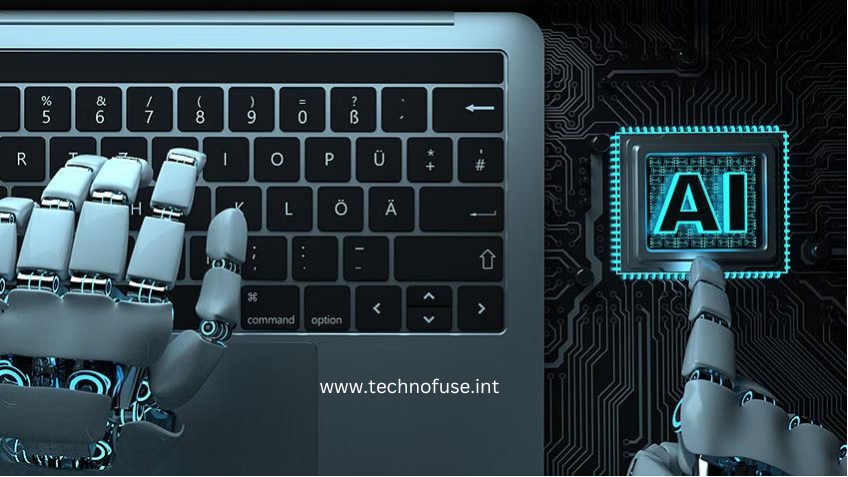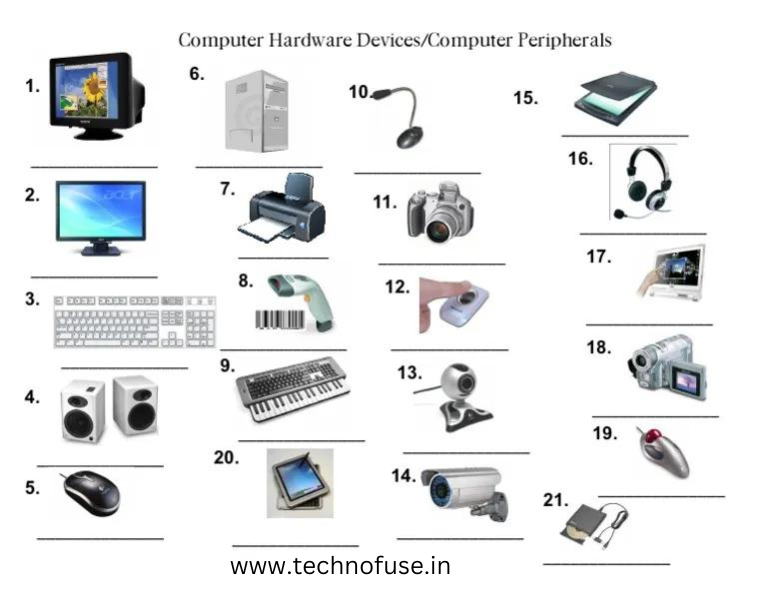What if your computer peripherals could read your mind and predict your needs? Imagine a future where technology smoothly integrates with our daily lives, transforming the way we interact with computers. The future of computer peripherals holds exciting possibilities, pushing the boundaries of innovation and offering a impression into a world of cutting-edge advancements. Are you ready to start on a trip into the future?
In today’s rapidly advancing technological landscape, computer peripherals are crucial in enhancing our computing experience. From keyboards and mice to printers and scanners, computer peripherals have come a long way regarding functionality, design, and innovation. As we look toward the future, developing (the latest and best) technology promises to (totally change and improve) the way we interact with our computers and devices. In this article, we will investigate into the exciting possibilities that lie ahead and explore the future of computer peripherals.
Join us as we start on this exciting journey through the future of computer peripherals. From mind-reading devices to immersive augmented reality experiences, the possibilities are endless. Get ready to be Fascinated, amazed, and inspired by the technological wonders that await us.
The Future of Computer Peripherals: Exploring Cutting-Edge Technology
As technology continues to develop at an aggressive rate, the future of computer peripherals holds huge potential. Innovations in areas such as artificial intelligence, virtual reality, and variable devices are poised to transform the way we interact with our computers and redefine the concept of computer peripherals as we know them today.

Artificial Intelligence (AI) and Computer Peripherals

One of the most significant advancements in the field of computer peripherals is the integration of artificial intelligence. AI-powered peripherals have the ability to learn and adapt to users’ preferences, resulting in a more personalized,easy to understand. For example, imagine a keyboard that automatically adjusts its layout based on your typing style or a mouse that anticipates your movements for enhanced precision. These AI-driven peripherals have the potential to revolutionize productivity and user satisfaction.
The Evolution of Computer Peripherals

Before we dive headfirst into the future, it’s essential to understand how computer peripherals have improved over the years. These devices have not only become more refined but have also expanded their horizons to encompass a wide range of functions beyond the basics.
Traditional Input Devices
At the dawn of computing, peripherals were limited to the basics – keyboards and mice. These input devices were bulky, often wired, and provided a basic means of interaction with the computer. While they served their purpose, they lacked the polished and versatility of today’s counterparts.
The Rise of Wireless
The advent of wireless technology marked a significant shift in the world of peripherals. Wireless keyboards, mice, and headphones liberated users from the constraints of tangled cables. The convenience and flexibility offered by wireless peripherals were a game-changer, setting the stage for further innovations.
The Future of Input Devices
As we venture into the future, it’s clear that input devices will continue to undergo remarkable transformations. Let’s explore some of the exciting developments on the horizon.
- Gesture Control Interfaces : Picture this: you control your computer with simple hand gestures. Gesture control interfaces, equipped with cameras and sensors, detect your movements and translate them into commands. This technology is not only intuitive but also has vast applications beyond the domain of computing. Imagine surgeons manipulating 3D medical images during surgery or architects designing structures in virtual environments using hand gestures. The potential of gesture control extends far beyond the office or home setting, making it a groundbreaking innovation with diverse applications.
- Brain-Computer Interfaces (BCIs) : Taking technology to the next level, we find ourselves at the doorstep of brain-computer interfaces (BCIs). BCIs enable users to control their computers using Artificial Intelligence-based signals. While this technology is still in its the initial phase of development, it holds vast promise, particularly for individuals with disabilities. BCIs have the potential to revolutionize accessibility, allowing those with limited motor skills to communicate and interact with computers more effectively. Moreover, BCIs open doors to entirely new forms of human-computer interaction, concrete the way for innovative applications in fields such as gaming and healthcare.
The Future of Output Devices
Output devices are just as vital as input devices when it comes to our computing experience. Here’s a glimpse into what the future holds for these peripherals.
- Augmented Reality Displays : Augmented reality (AR) is rapidly transforming how we perceive and interact with digital information. AR displays, such as smart glasses, offer immersive experiences that blend the digital and physical worlds seamlessly. These displays have applications in various domains, from education to professional tasks. Imagine a world where you put on a pair of smart glasses, and your computer-generated notes hover in the air as you study, or where engineers can visualize complex 3D models right in front of them. Augmented reality displays have the potential to revolutionize how we consume digital content, making it more engaging and interactive than ever before.
- Holographic Monitors : Holographic technology, once limited to science fiction, is inching closer to reality. Holographic monitors are collected to become the next frontier in computer peripherals. These monitors have the ability to project 3D images and objects onto your desk, creating a truly immersive computing experience. While holographic monitors are still in the early stages of development, they hold vast promise for fields like design, engineering, and entertainment. Architects could design and interact with holographic blueprints, and artists are able to manipulate virtual clay using their hands just like they would with real clay. The possibilities are as limitless as the holographic worlds themselves.
The Future of Connectivity
Connectivity is the glue that binds our peripherals to the digital realm. As technology advances, so does the way our devices connect to the internet and each other.
- 5G-Enabled Peripherals The advent of 5G networks is collected to transform how peripherals connect to the internet. With lightning-fast speeds and low latency, 5G-enabled peripherals will seamlessly integrate with the cloud, making remote work and collaboration more efficient than ever before. Consider a scenario where a 3D printer in one part of the world communicates with a designer’s computer in another, allowing for real-time adjustments and remote manufacturing. The possibilities opened up by 5G-enabled peripherals are immense and promise to redefine the way we work and connect.
- Internet of Things (IoT) Integration : The Internet of Things (IoT) has already begun to permeate our lives, and peripherals are no exception. Smart peripherals, such as printers and scanners, can now communicate with other devices and services through the IoT. Imagine a smart printer that not only prints documents but also monitors its own ink levels and automatically reorders when it’s running low. This level of automation enhances convenience and ensures that you’re never caught off guard by an empty ink cartridge again.
Conclusion
As we look into the future of computer peripherals, it’s abundantly clear that we’re on the edge of a revolution. These devices, once considered simple accessories, are now collected to redefine how we interact with computers and the digital world. Gesture control, brain-computer interfaces, augmented reality displays, holographic monitors, 5G connectivity, and IoT integration are just a glimpse of what’s to come.
The future promises not only greater convenience and efficiency but also new frontiers of creativity and accessibility. Whether you’re a professional, a gamer, an artist, or someone with unique accessibility needs, the future of computer peripherals holds something extraordinary for everyone.
So, as we navigate this exciting journey into the future, let’s embrace these innovations with open arms and look forward to a world where our computers and peripherals work together seamlessly, enhancing our lives in ways we could only dream of in the past.
Frequently Asked Questions (FAQs)
FAQ 1: What are computer peripherals?
Computer peripherals are devices that connect to a computer or other digital device to extend its functionality or provide input/output capabilities. Examples of computer peripherals include keyboards, mice, printers, scanners, and speakers.
FAQ 2: How is artificial intelligence revolutionizing computer peripherals?
Artificial intelligence is revolutionizing computer peripherals by enabling them to learn and adapt to users’ preferences. AI-powered peripherals can provide a more personalized and intuitive computing experience, enhancing productivity and user satisfaction.
FAQ 3: What are some examples of virtual reality peripherals?
Virtual reality peripherals include devices such as VR headsets, motion controllers, and haptic feedback gloves. These peripherals enable users to immerse themselves in virtual environments and interact with them in a more natural and immersive way.
FAQ 4: How do wearable devices integrate with computer peripherals?
Wearable devices integrate with computer peripherals by providing seamless connectivity and control. For example, a smartwatch can be used to receive notifications, control media playback, or even perform basic tasks on a connected computer or smartphone.
FAQ 5: What are holographic displays, and how can they be integrated into computer peripherals?
Holographic displays project three-dimensional images or holograms that appear to float in space. These displays can be integrated into computer peripherals by using technologies like holographic projectors or augmented reality glasses to create immersive and interactive experiences.
FAQ 6: What are the advantages of wireless connectivity in computer peripherals?
Wireless connectivity in computer peripherals eliminates the need for cables, providing greater freedom of movement and a cleaner workspace. It also simplifies the setup process and allows for more seamless integration with other wireless devices.
